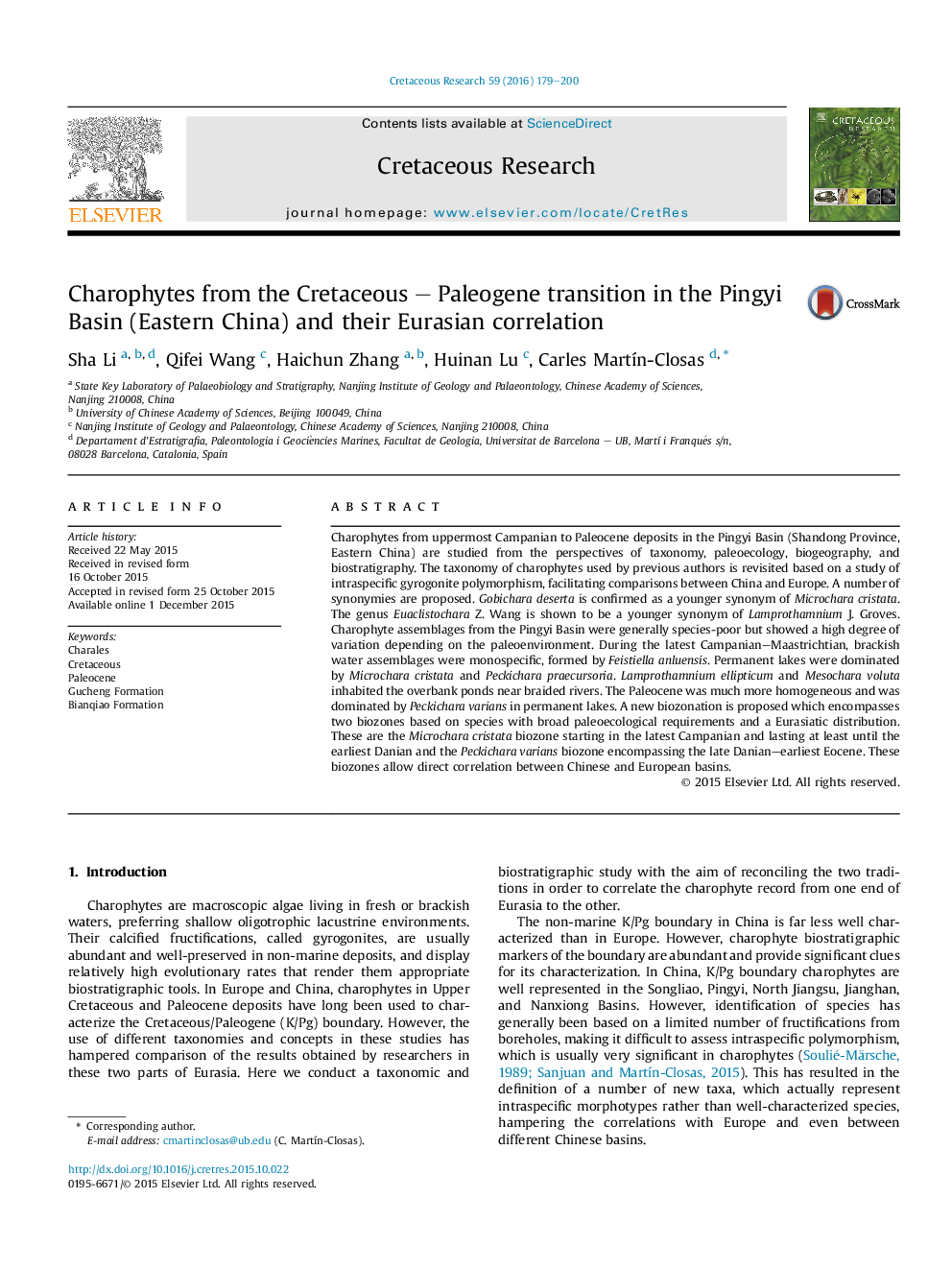| Article ID | Journal | Published Year | Pages | File Type |
|---|---|---|---|---|
| 4746797 | Cretaceous Research | 2016 | 22 Pages |
Abstract
Charophytes from uppermost Campanian to Paleocene deposits in the Pingyi Basin (Shandong Province, Eastern China) are studied from the perspectives of taxonomy, paleoecology, biogeography, and biostratigraphy. The taxonomy of charophytes used by previous authors is revisited based on a study of intraspecific gyrogonite polymorphism, facilitating comparisons between China and Europe. A number of synonymies are proposed. Gobichara deserta is confirmed as a younger synonym of Microchara cristata. The genus Euaclistochara Z. Wang is shown to be a younger synonym of Lamprothamnium J. Groves. Charophyte assemblages from the Pingyi Basin were generally species-poor but showed a high degree of variation depending on the paleoenvironment. During the latest Campanian-Maastrichtian, brackish water assemblages were monospecific, formed by Feistiella anluensis. Permanent lakes were dominated by Microchara cristata and Peckichara praecursoria. Lamprothamnium ellipticum and Mesochara voluta inhabited the overbank ponds near braided rivers. The Paleocene was much more homogeneous and was dominated by Peckichara varians in permanent lakes. A new biozonation is proposed which encompasses two biozones based on species with broad paleoecological requirements and a Eurasiatic distribution. These are the Microchara cristata biozone starting in the latest Campanian and lasting at least until the earliest Danian and the Peckichara varians biozone encompassing the late Danian-earliest Eocene. These biozones allow direct correlation between Chinese and European basins.
Keywords
Related Topics
Physical Sciences and Engineering
Earth and Planetary Sciences
Palaeontology
Authors
Sha Li, Qifei Wang, Haichun Zhang, Huinan Lu, Carles MartÃn-Closas,
